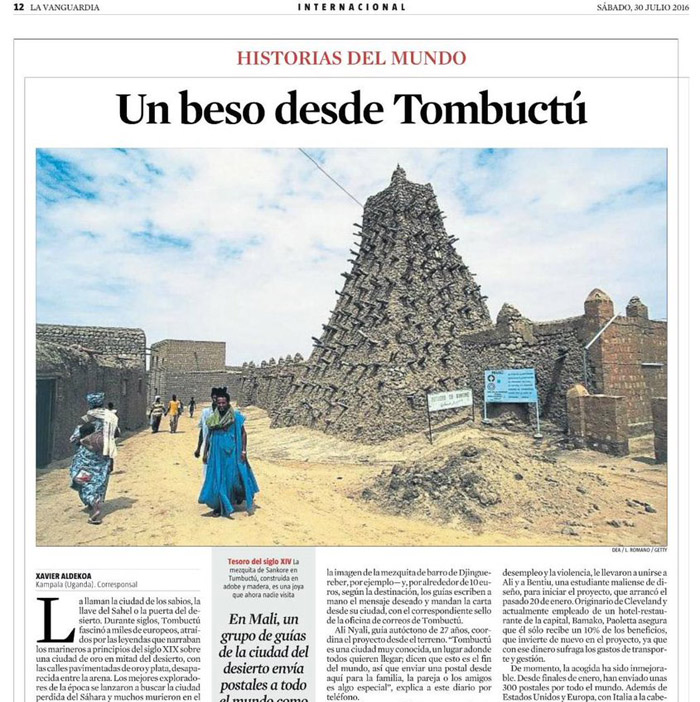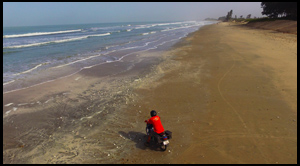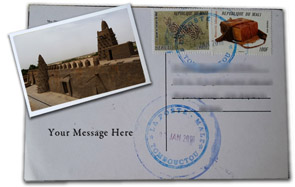The above image is an excerpt of an article written on our postcards from Timbuktu project from La Vanguardia, which I learned is the largest newspaper in Catalonia. Wikipedia also informs me that:
It is one of the oldest papers in Spain, and is the only Catalan newspaper that has survived all the Spanish regime changes, from the restoration of Alfonso XII to the 21st century.
Thanks to journalist Xavier Aldekoa for writing the story! It has resulted in at least 50 postcards to Spain, many of them to Barcelona. I have posted a round-up of articles and radio pieces on the project over here.
We have had over 350 postcards sent to 25 different countries. Some of the more interesting stats:
- furthest distance traveled by one of our Timbuktu postcards: New Zealand
- only country in Africa where we have sent a postcard: Tunisia
- We had one postcard take over 3 months to arrive to an address in Holland. We have no idea what happens to the cards once they leave Mali, and some of them have certainly been on very interesting journeys. Arrival times remain entirely unpredictable.
- We just got our first order for a postcard to South America. Timbuktu to Uruguay!!
- To our knowledge, only two postcards have never shown up (as in, they still haven’t shown up after 6 months). Maybe one day they will turn up?
- We have had postcards written in English, French, Spanish, Italian, German, Bamanankan, Swedish, Danish, Portuguese and Icelandic. We have not yet received any messages that use a non-Latin alphabet. While I am looking forward to our first orders in Russian or Chinese, Ali and the boys in Timbuktu probably aren’t – they will be the ones that have to write them out by hand!
We’ve had people write:
- birthday wishes
- love letters
- poems and lyrics
- at least one apology letter
- motivational messages
- a request to officiate a wedding
- love letters from secret admirers
- a paragraph on the history of the Djinguereber Mosque in Timbuktu (this person was collecting postcards from UNESCO World Heritage Sites)
- a reminder to let the cat out of the house
- many, many inside jokes
- notes intended to convince the recipient that the sender is in fact in Timbuktu
- and at least one letter that seemed to be some kind of clue in a scavenger hunt
I think this is a worthwhile project mainly because it’s putting some money into the hands of young guys who lost their livelihoods when tourism collapsed in Mali. There is an additional aspect of the project that I have also come to appreciate, and that is this marriage of analog and digital. With a few clicks and keystrokes on a website, you can send a physical object on a bizarre journey across the world. When the postcard arrives, it will have been on several airplanes, motorbikes, buses and trucks. Who knows how many people will have handled it. In Mali, it’s at least 4 people before it even arrives at the Bamako post office.
Another unexpected benefit of this project? We have woken up the Timbuktu post office. A friend of mine in Bamako, Katarina Höije, recently traveled to Timbuktu and wrote about our postcard operation. I really enjoyed her reportage, because she actually went to the post office itself and interviewed the clerk there. Check out her article in Voice of America here.
We live in a world where you can now send a handwritten message from Timbuktu to anywhere in the world with a few clicks on a website. I am happy about this. If you want to send one, go to postcardsfromtimbuktu.com.
It will show up looking something like this:
¡Mira @xavieraldekoa, ha llegado mucho antes de lo que esperaba! Contenta, aunque solo sea un granito de arena… 😉 pic.twitter.com/a8pYrBTGFi
— Alesia Martínez (@alesiamartinez) August 23, 2016
Look out for an upcoming post on recent developments in Mali. You can get a preview of it by reading this post by Bruce Whitehouse.





Great project Phil – looking forward to reading your next post.